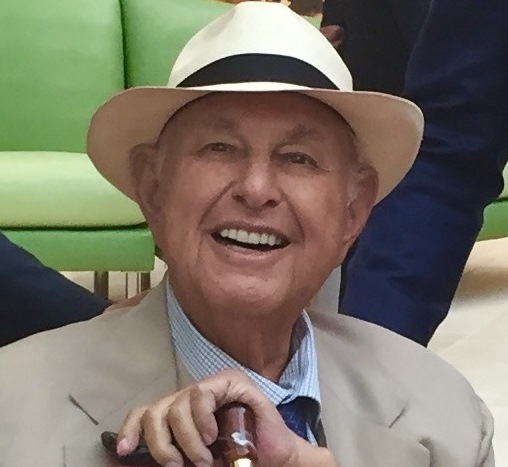Taubman Centers Founder Gone But Not Forgotten
Any successful retail real estate leader in the future will undoubtedly have taken a page from his book.
By Barbra Murray, Contributing Editor
Any successful retail real estate leader in the future will undoubtedly have taken a page from his book. A. Alfred Taubman passed away at the age of 91 on April 18, leaving behind an indelible mark on the worlds of philanthropy, education, research and of great note, commercial real estate. The founder of Bloomfield Hills, Mich.-based Taubman Centers Inc. and the force behind the multi-billion-dollar shopping mall REIT’s success, he lives on as a legend in the retail real estate sector.
Taubman got his start in retail by working at a department store well before he hit his teens. He later explored other interests before establishing Taubman Centers in 1950. He started off simple; in 1953, the Detroit-area native developed his first shopping center, North Flint Plaza, in Flint, Mich. Many a notable development followed, including Woodfield Mall in Schaumburg, Ill., which took the title of the largest mall in the U.S. in 1973, having expanded to 1.9 million square feet two years after its opening. The suburban Chicago super-regional shopping mall has since swelled to roughly 2.3 million square feet and, now owned by Simon Property Group, still ranks as one of the top 10 largest malls in the country.
Taubman took Taubman Centers public in 1992, a move that marked a transition in the real estate industry. “[Taubman Centers’ IPO] opened the IPO floodgates with its landmark UPREIT transaction,” PricewaterhouseCoopers L.L.P. notes in a guide produced in November 2014. “Taubman’s $300 million UPREIT transaction made it possible for private real estate operators and their partners to go public without exposing them to adverse tax consequences.” And as noted on Taubman Centers’ website, the IPO “is credited with setting in motion the securitization of America’s commercial real estate.”
Under its founder’s guidance, Taubman Centers broke new ground over and over again, and today, the REIT is recognized as having developed the earliest two-level shopping centers; the first food courts and multiplex theaters; and the first column-free store design. Taubman isn’t the only giant to go down in history as having helped mold the modern retail environment, but he is the one whom shoppers–including past, current and future teens driven by the innate need to congregate in popular locations–should be thanking for perfecting the concept of the enclosed mall.
Taubman retired from Taubman Centers as chairman of the Board of Directors in 2002, leaving the company in the extremely capable hands of sons Robert Taubman and William Taubman, currently CEO and COO, respectively. Today, Taubman Centers owns, manages and/or leases 22 properties in the U.S. and Asia–including the month-old, 650,000-square-foot upscale Mall of San Juan in Puerto Rico–and is in the midst of developing four additional shopping centers totaling 4.1 million square feet.
Up to his death–he suffered a heart attack in his home–Taubman continued to play a role in the industry, doling out sage advice and offering his educated opinion regularly on his blog. In March, he explained why, in his estimation, e-tailing will never render brick-and-mortar stores obsolete. He wrote, “The technical limitations of computer screens make it impossible to effectively communicate such important product characteristics as fit, color and feel. There are no fitting rooms or tailors in cyberspace. And the more expensive an article of clothing, the more critical it is to fit well. There are an infinite number of colors and shades and each works differently for each individual, depending on hair color, complexion and eye color–even high-quality print catalogues, the four-color process cannot match the exact color of a garment. So if you want to look your best, and most people do, head to the mall!”
He was a retail real estate role model. His is a life worth examining, and he thought so, too. In 2007, Taubman penned his autobiography, Threshold Resistance: The Extraordinary Career of a Luxury Retailing Pioneer. In the introduction, he explains his motivation for writing the book: “Mostly it’s because I want to share what I’ve learned from my experiences. It’s a safe bet most readers will never build a shopping mall or buy an auction house–or spend part of their retirement in a federal prison. Nonetheless, I’ve concluded that my experiences–my ups and downs, my gains and losses, my victories and defeats–allow me to offer some valuable perspective.” No one could dispute that point.








You must be logged in to post a comment.